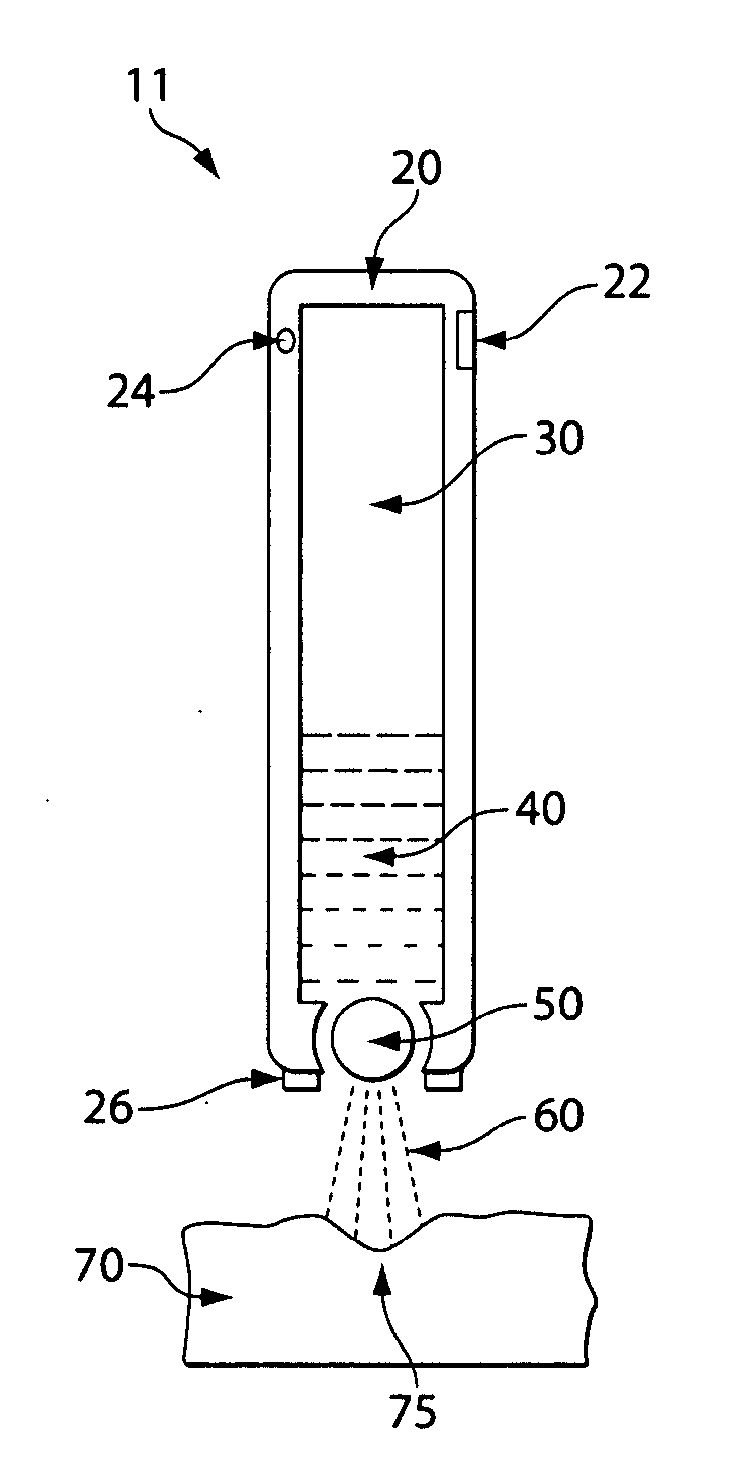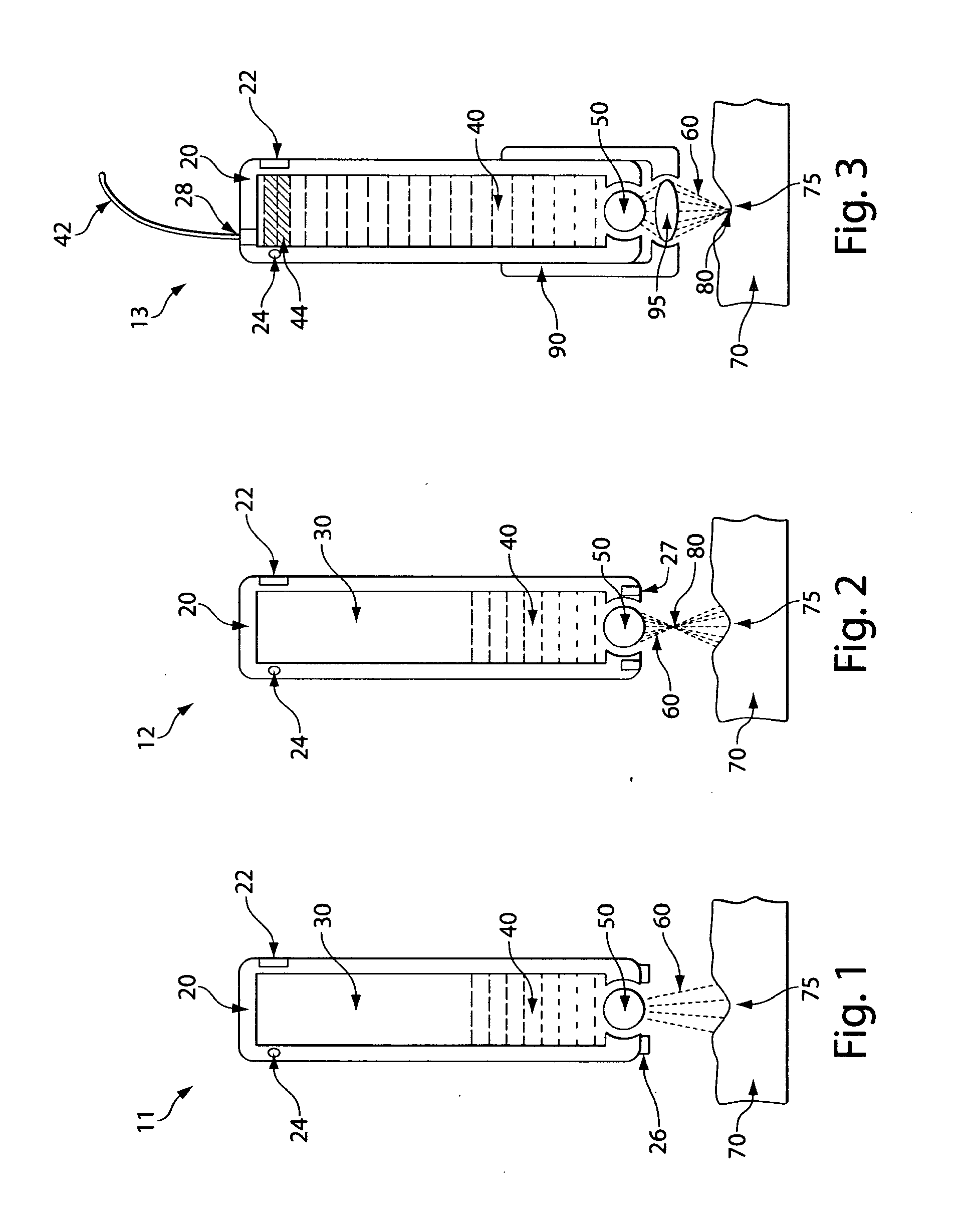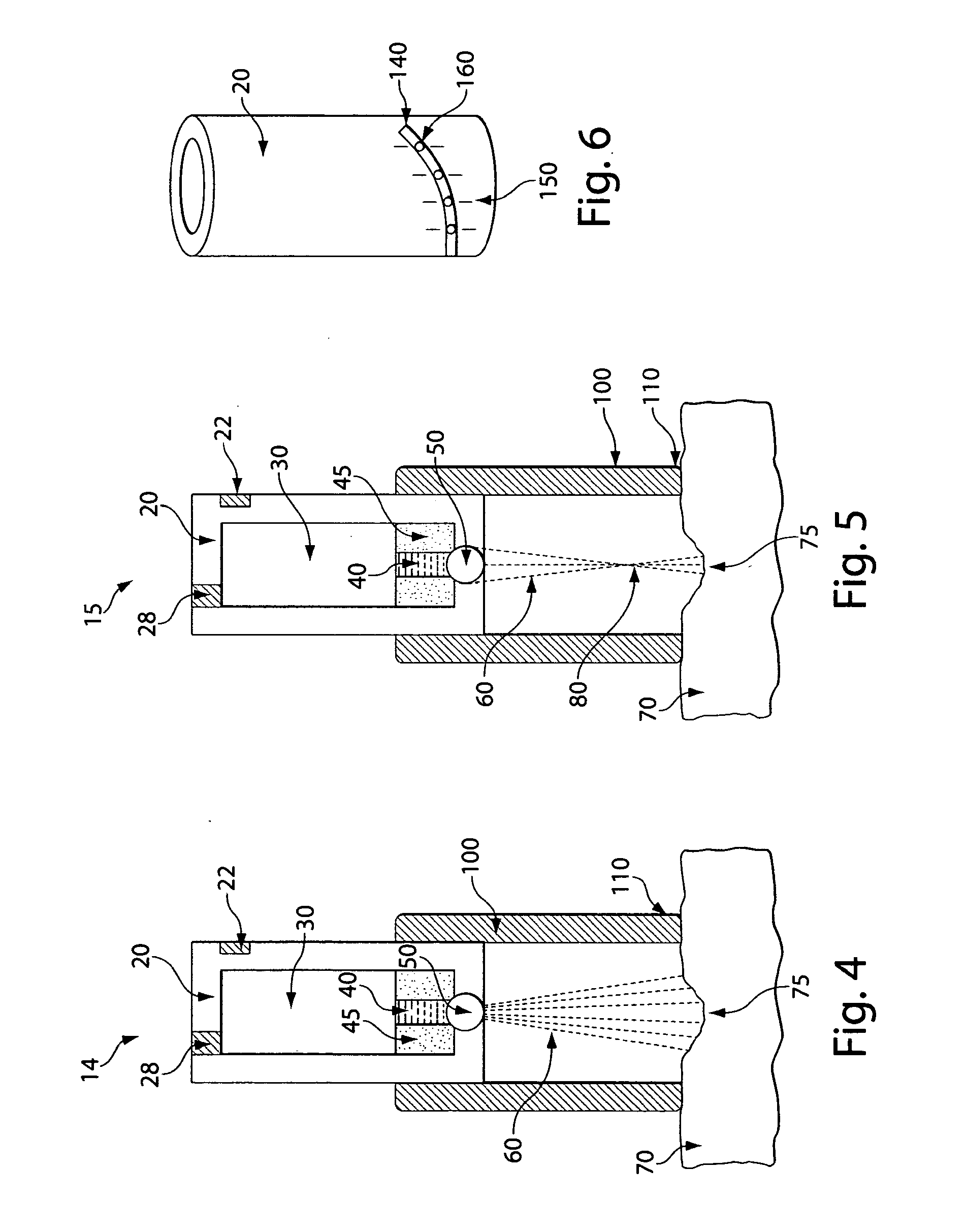Portable Semiconductor Diode Laser for Medical Treatment
- Summary
- Abstract
- Description
- Claims
- Application Information
AI Technical Summary
Benefits of technology
Problems solved by technology
Method used
Image
Examples
Embodiment Construction
[0032]As used herein, the phrase “semiconductor diode laser”, or simply “diode laser”, means a semiconductor device which emits photons in a laser-like manner, i.e. as generally coherent and monochromatic pulses or continuous beams. These lasers are distinguished from lasers that are pumped by external light sources (which may themselves be lasers, including diode lasers). Diode lasers are typically and preferably capable of being mass-produced by standard chip fabrication methods. They may have one or more lenses or other focusing or beam-shaping means included in their fabrication and / or packaging, to control the size and divergence or convergence of the beam when it is emitted from the laser package. Suitable diode lasers are described in our co-pending application US 2007 / 0002915 and its equivalents, but other laser systems may be useful in the invention.
[0033]FIG. 1 shows a first version of the device of the invention. (The Figures herein showing the device are generally schema...
PUM
 Login to View More
Login to View More Abstract
Description
Claims
Application Information
 Login to View More
Login to View More - R&D
- Intellectual Property
- Life Sciences
- Materials
- Tech Scout
- Unparalleled Data Quality
- Higher Quality Content
- 60% Fewer Hallucinations
Browse by: Latest US Patents, China's latest patents, Technical Efficacy Thesaurus, Application Domain, Technology Topic, Popular Technical Reports.
© 2025 PatSnap. All rights reserved.Legal|Privacy policy|Modern Slavery Act Transparency Statement|Sitemap|About US| Contact US: help@patsnap.com



